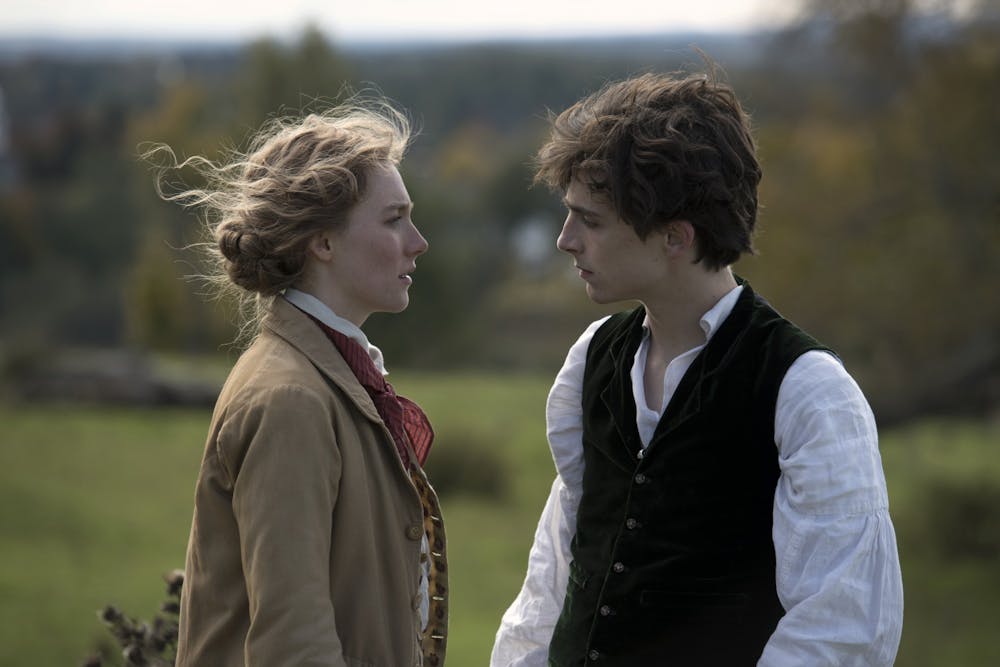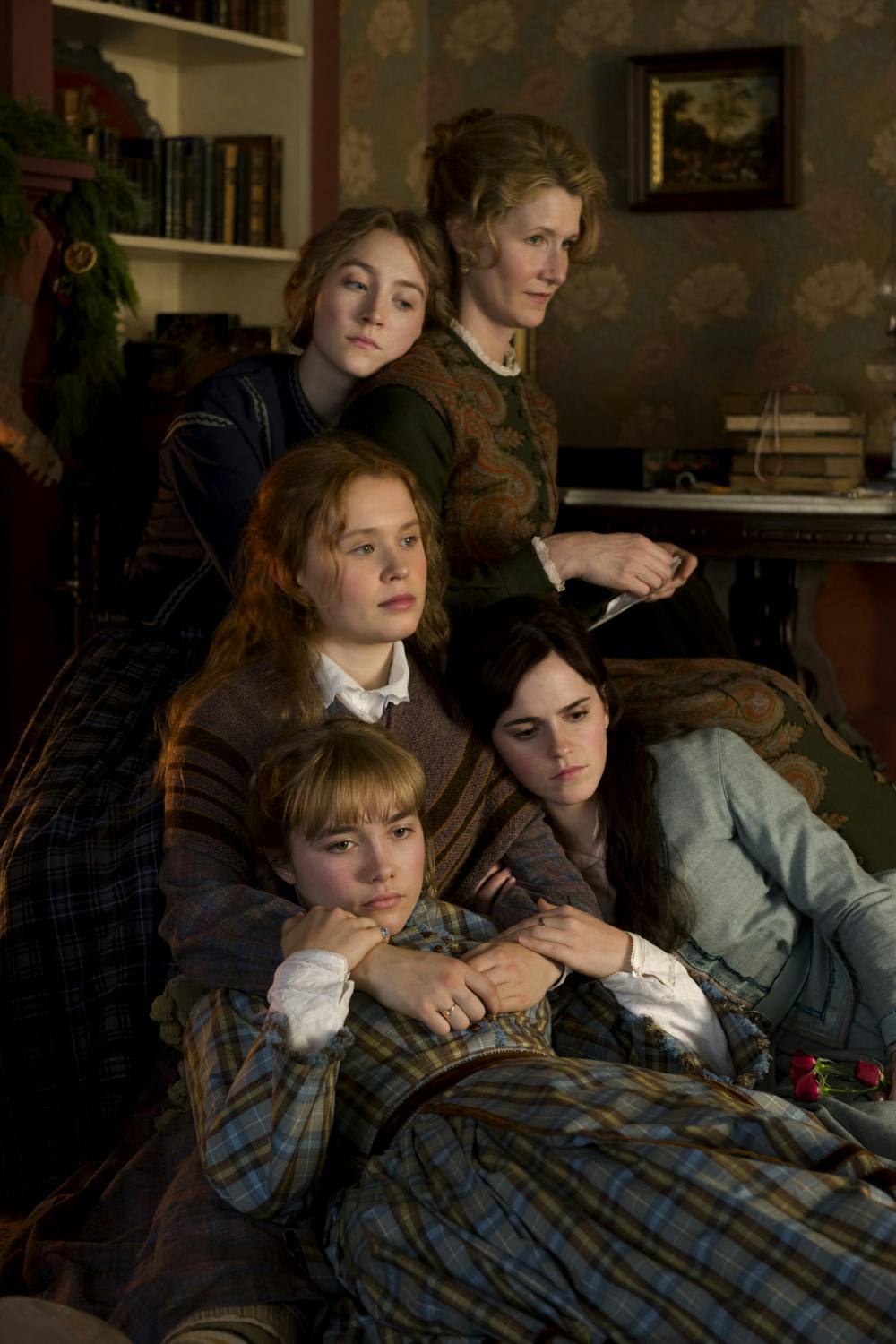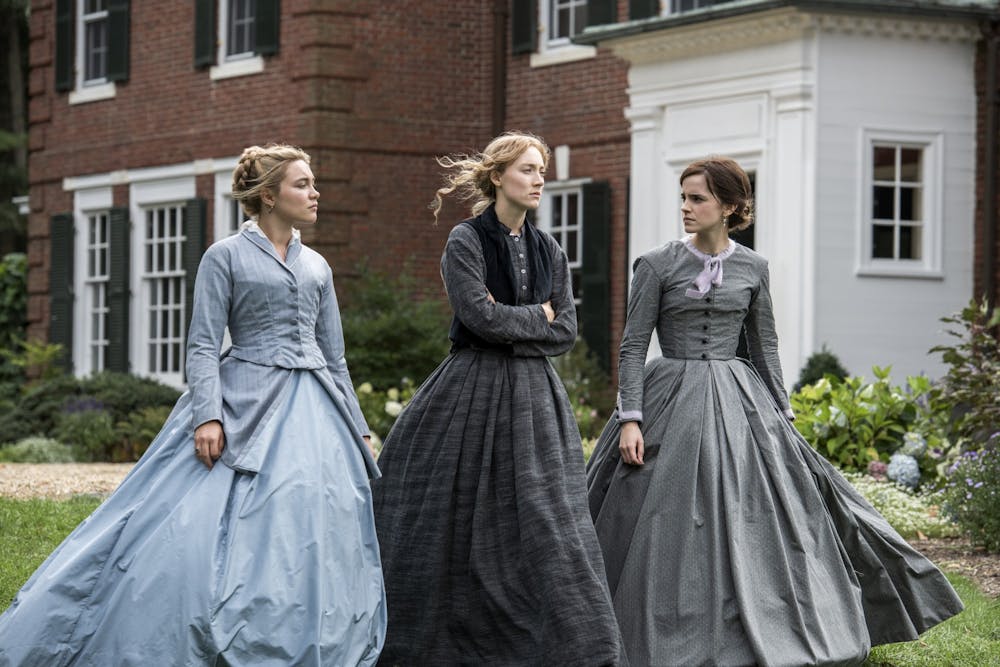I read Little Women for the first time in sixth grade, climbing to the top of my bunk bed every night armed with the four–inch–thick novel in one hand and a book light in the other. The story of a Civil War–era family of four daughters was one I soon grew infatuated with. So when its latest film adaptation by Greta Gerwig came out, I ran to see it.
I often return to the story, perpetually pining for the unfulfilled romance between Jo and Laurie, praying that Beth will overcome her illness, and halfheartedly wishing for some chaotic interruption to Marmee’s saintly performance as a mother. Maybe it’s the cynic in me, but can anyone really be that kind?
I felt that each of the March sisters represented a type of girl, and I knew exactly which type I wanted to be. Beth was the sweet and sensitive one, the understanding sister who ended up losing her life after contracting Scarlet Fever from a poor family. Amy was the beautiful spoiled brat, burning Jo’s handwritten manuscript in a truly despicable act of evil, though ultimately escaping the poverty of her family by marrying rich. Meg was the foolish romantic—the one with a shot at financial security before falling in love with a tutor and having more kids with him than she could really afford.
But then there was Jo, the character meant in some ways to emulate author Louisa May Alcott herself. A strong–willed writer who couldn’t be bothered with the thought of marrying rich or the pursuit of any life that denied her passion to tell stories, Jo’s character filled the pages of Little Women with a rebellious spunk that made the responsible or reasonable approaches of all other characters seem weak and boring. Over time, she became not only the patron saint of writing, but of defying the life implied by economic benefits of marriage, of the kind of woman who could take a comfortable thrill in rejecting the traditional feminine role of her time.
Alcott’s book has a deeply unsatisfying ending in Jo’s marriage to Professor Bhaer (who is surprisingly hot in Gerwig's film), greatly weakening the strength of her conviction that marriage serves only to hold women back from their dreams. Gerwig’s adaptation of the novel—starring dynamic duo Saorise Ronan and Timothée Chalamet—attempts to defy this ending by heavily suggesting that Alcott’s marriage of Jo to someone at the end of the novel was merely a method of paving the way for its publication, being written at a time when unmarried women were considered inferior, disappointing, or scandalous.

There’s ambiguity at the end of Gerwig’s film, in which Jo’s romance with Professor Bhaer can be interpreted as reality or as an imagined ending to the book she pitches to a newspaper editor. The alteration gives the literary classic an added feminist twist, in which Jo seems to control her own narrative. Even if Jo ultimately chooses to conform to the marriage plot suggested by her editor, Gerwig emphasizes to viewers that in this film adaptation, Jo’s choice to do so is undoubtedly her choice.
But despite Gerwig’s grand efforts to repair the wrongs of the past and give the story a refreshed sense of empowerment, the movie and the book it’s based on both fall short of being the great feminist anthem that female writers (like myself) seem to want it to be. There is an unavoidable element of whiteness, and consequently of privilege, that runs through the storyline of Little Women.
Though relatively poor in the book, the March family once had wealth, and still maintains ties to sour characters like Aunt March for the privileges afforded by the assumed inheritance from her. The story takes place during the Civil War, yet there is little mention or acknowledgement of how different the story would go from the perspective of a black female writer rather than a white one like Jo. There is a notion of social and economic mobility, even if it’s through the trap of marriage, that simply wouldn’t be available to non–white women of this era.
I’m not here to decry Little Women as racist or sheltered, but to recognize the limitations inherent in the story itself. I loved the book growing up, and all the movies that followed, because I could easily identify with any member of the March family. My own identity matched up with theirs, and it strengthened my connection to the characters and my desire to be like them in a way that simply wouldn’t function as well for someone who didn’t come from a white American family with two sisters like I did.

Even with Gerwig’s plot twist, the story will always fall short for readers or viewers that don’t share certain identities with the characters of Little Women. But what’s important to note is that it never pretends to be a narrative for all, but one that’s widely recognized as autobiographical of Alcott’s own individual experience.
There’s no reason to mandate male crowds to attend Gerwig’s film for a lesson in feminism or to laud Jo as one of the primary inspirations for female writers. There are ways to watch the film for the heartbreaking story it shares without feeling a need to tether ourselves to its characters.
Truthfully, my years of idolizing Jo were what ripped me to shreds as I sat tearfully watching the movie in theaters a few weeks ago. I spent my childhood blindly aligning my own determination and stubbornness to defy the same societal norms that she did only to lose myself in the deep loneliness that she admits to in the film. It’s the sort of loneliness that comes from telling ourselves the stories of our own lives before they even happen, the kind of emptiness felt from a perfectly followed formula.
But perhaps that’s the power of Little Women, especially for viewers who differ greatly from the Marches. The new film asks more questions than it answers and exposes more cracks in its premise than it fills, giving us a beginning, rather than an end, to the conversations of those its story leaves out.

